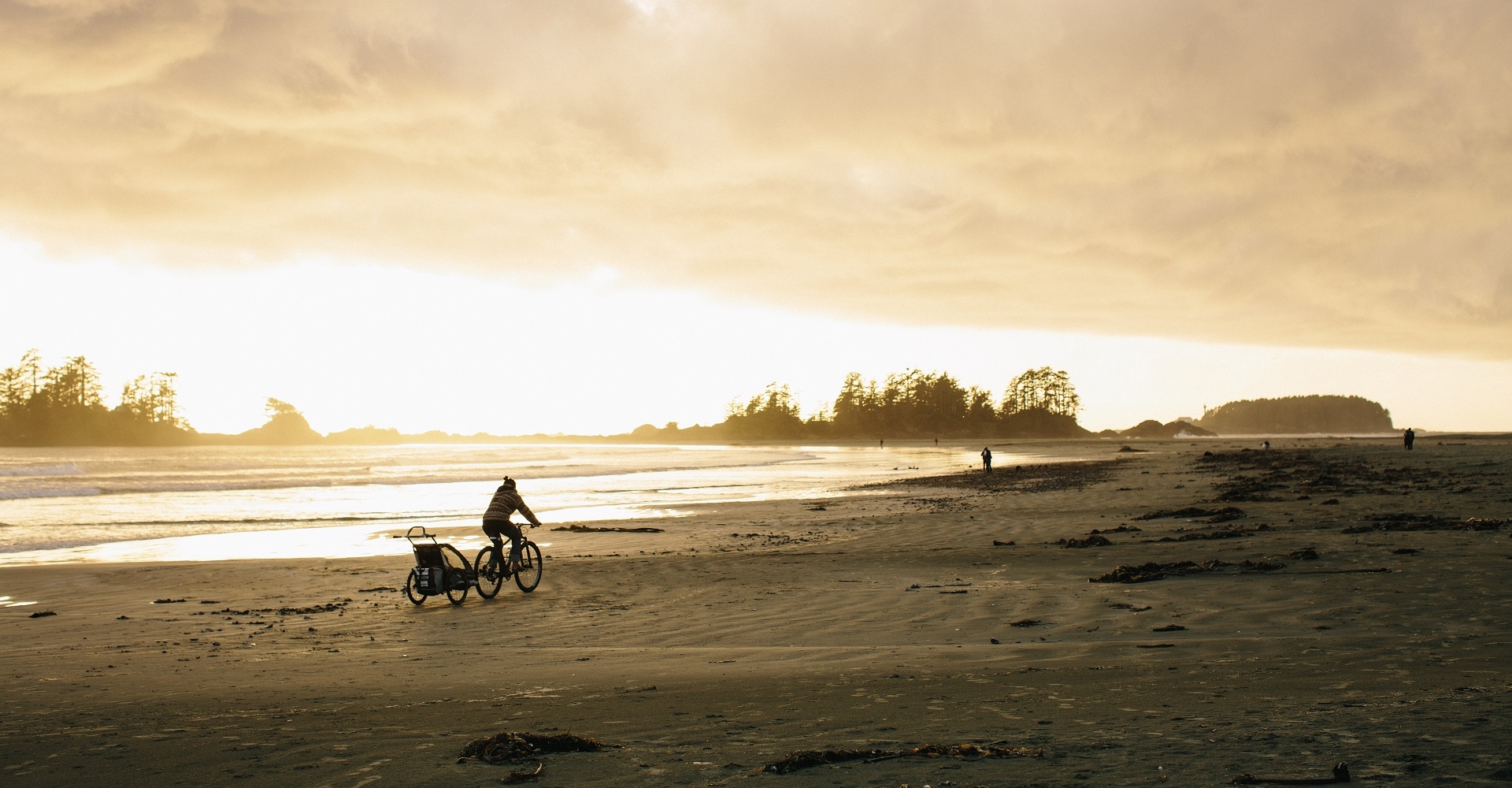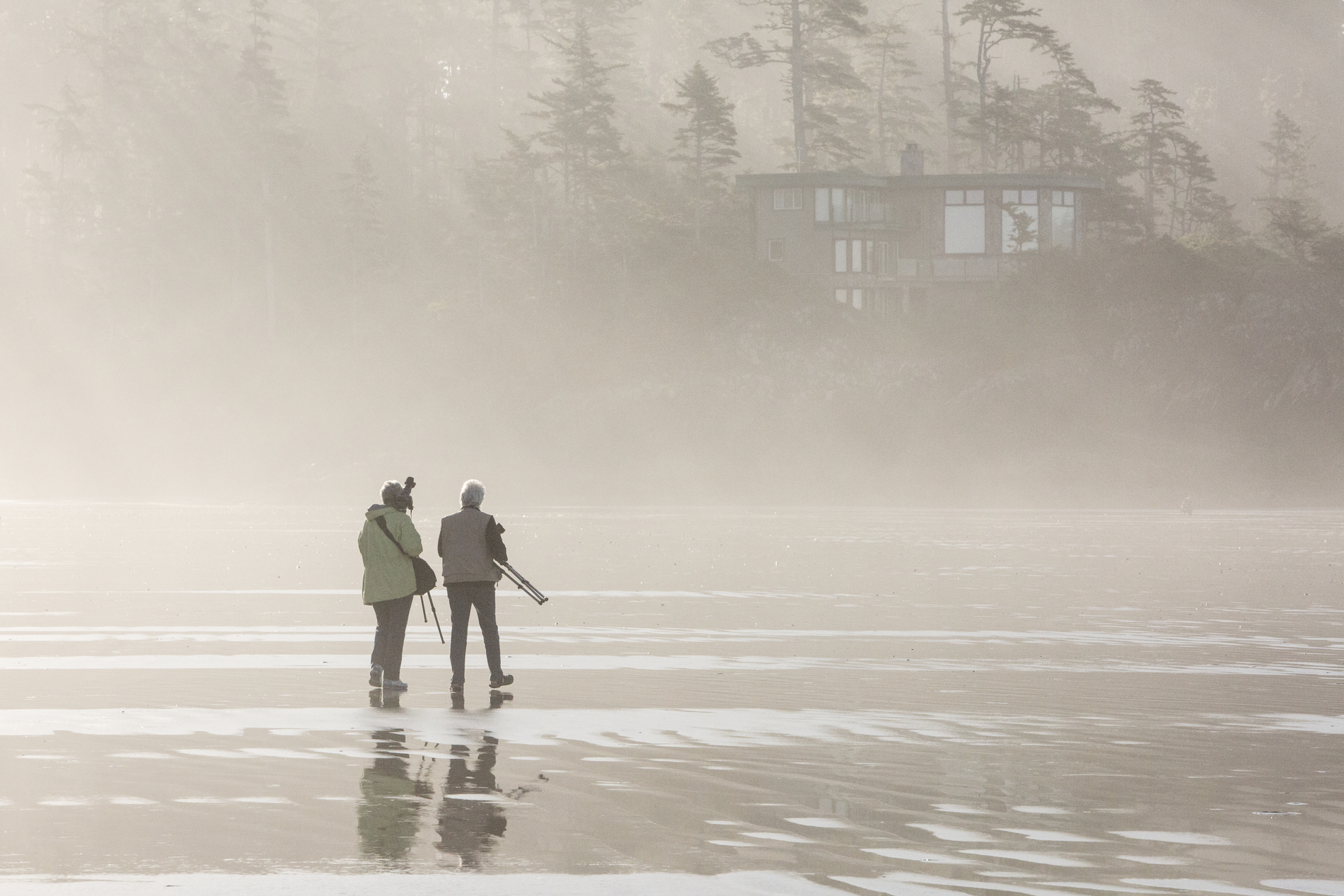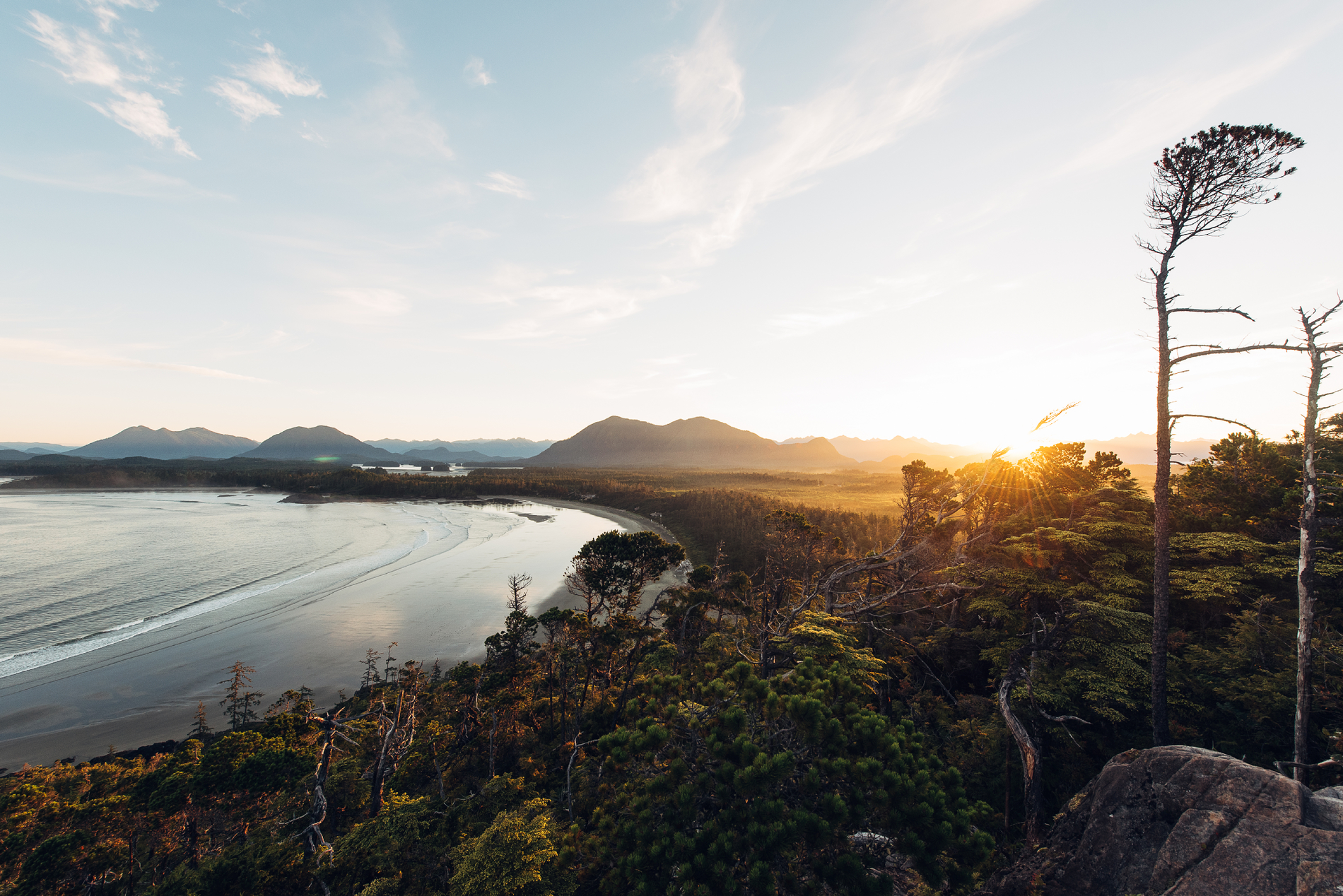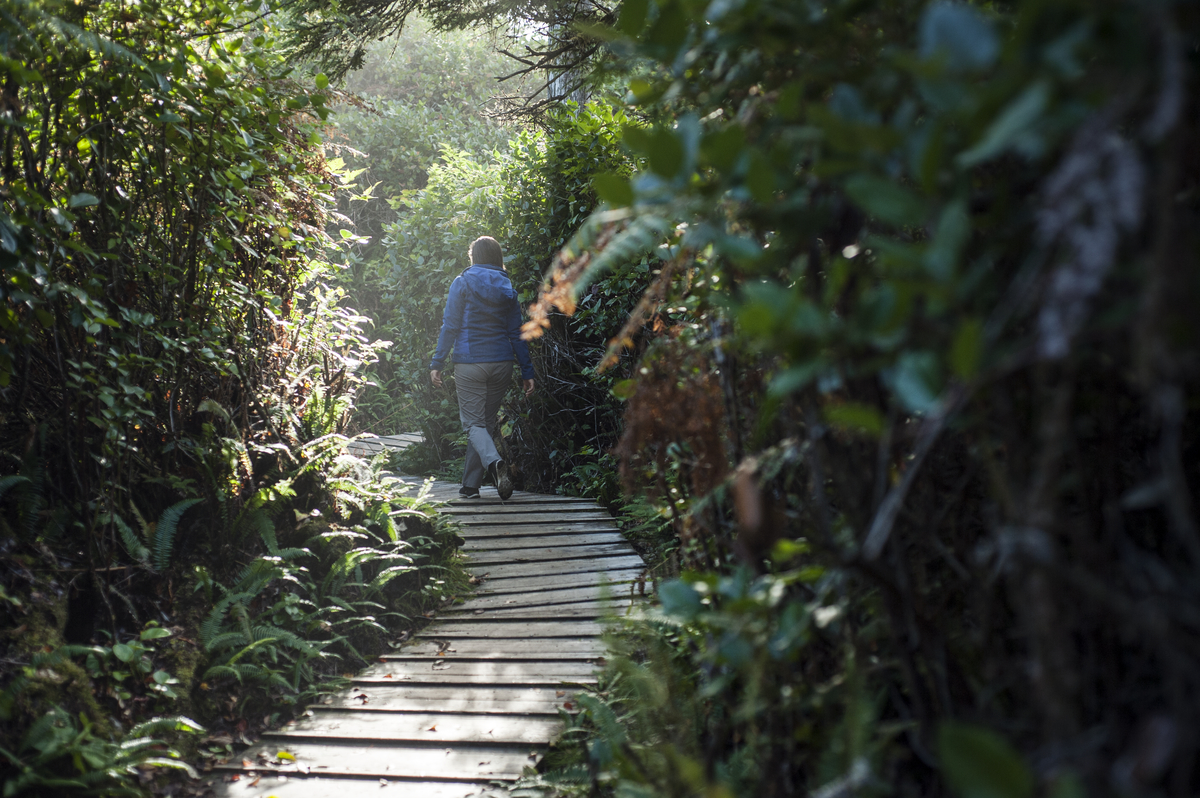After more than a year in intensive recovery, not knowing if we would ever walk together on any beach again, we made it back to Tofino and headed for our favourite part of Chesterman. We couldn’t walk far—it was a struggle through the soft sand—but we made it 30 m (100 ft) to the tide’s edge and cried together at how far she’d come. We sat for hours watching our kids roll through the surf, and it was then we made our vow to walk the full 2.7-km stretch of sand to the Wickaninnish.

On a late summer evening in 2018, with the sun slowly setting behind Frank Island, we set a goal: One day, no matter how long it took, we’d walk the length of Chesterman Beach together again from south to north, all the way to the Wickaninnish Inn café to celebrate. We watched the deepening purple and orange silhouettes of the island’s signature stand of Sitka spruce and the 115-year-old lighthouse on Lennard Island, metaphors for hope and resilience that silently urged us on.
September 16, 2017, my 41-year-old wife—mother of two, teacher of many—had a massive stroke. It came suddenly, silently, severely, and she should not have lived. But Ineke is no ordinary person: I’ve seen her carry a backpack half her body weight through the Northern Vancouver Island rainforest, scurry down the side of an erupting volcano, and fight off would-be robbers in Bangkok. The stroke, however, took its best shot, leaving her paralyzed and unable to read or even speak.
As a young woman, Ineke was a ballerina at the National Ballet School of Canada. Later, she was a primary school teacher working with special needs children, many of them struggling with speech. And throughout her life, she was one of the most voracious readers I have ever known. Losing her ability to move, speak, and read was the definition of difficult. But we had a beacon. From the first few days in a hospital stay that would last months, even in the moments when she was clinging to life by the thinnest of threads, I urged her to hold on, to come back with me to the place we’ve always returned: Tofino.
Chesterman Beach | Boomer Jerritt; Tofino Sunset | Johan Lolos; Boardwalk trail near Cox Bay | Destination Canada/Brian Caissie
When Ineke and I first started dating, back in the mid-90s, Tofino was our go-to getaway. We were living the quintessential student life—renting rooms, working night jobs, studying full time. But we would save our pennies and take off from the University of Victoria campus to stay at a little-known place across from Chesterman Beach. I’d attempt to surf, and when the ocean was flat we’d walk for hours along Long Beach, searching for sand dollars. In the years that followed, we saw the sun rise in Japan and set in Indonesia, snorkelled in the Andaman Sea under a full moon, and hiked to the top of Gimli Ridge on our honeymoon. But for us, there’s nowhere like Tofino. This place is special to us in ways we never expected, on a journey we could never have imagined.
Nearly a year later we returned, following hundreds of exhausting physiotherapy and speech therapy appointments, and the anger, fear, and countless challenges of adapting to disability as a family. On our drive through the Alberni Valley and up and over Sutton Pass, Ineke, through the short words and broken sentences of her slowly recovering speech, made intimations about the walk to the Wick. Since the stroke, we’d ventured only short distances on sandy surfaces, and I worried that the full walk may not be realistic. But I encouraged her, knowing that it would be easy to stop and let her sit in the sand while I went to get the car.
I dreamt that night that my wife could talk again. I woke up repeatedly, hearing her breathing backed by the sound of the nearby surf, rhythmically rising and falling. Every time I fell back asleep, there she was, talking perfectly through the ether like nothing had ever happened. When I woke the final time, Ineke wasn’t there. I found her downstairs, a book in her hand. She looked up with her bright, almond eyes and said, clear as day, “I can read!” To see her 50 pages into a full-fledged novel—after it had taken her months to be able to distinguish A from B—felt like a miracle. It wouldn’t be the only one that day.
After breakfast, we tied Ineke’s boots extra tight and headed for the beach. The skies were clear, the tide low. Our kids circled around and past us on their bikes, singing encouragement to their mom. Her steps were laboured, but Ineke was determined. I talked gently with her about how proud I was; spoke lovingly of the many trips we’d made here and how healing Tofino would continue to be on our journey. After just 90 minutes, Ineke, slow but sure, made it to the tide pools in front of the Wickaninnish Inn, walked up the steps to the café, sat down, and ordered a latte.
I could hardly speak as we sat and looked out over the beach, slowly sipping on our miracle. After some time, I told her I would run back and get the car to drive her home, but she was having none of that. Much to the shock of our children and me, Ineke stood up, made her way down to the beach, back to the tide flats, and walked all the way home.
Header image: Tofino Sunset: Graeme Owsianski
We’ve come so far, but in many ways our adventure has just begun. Ineke is still dealing with significant paralysis, and each word or short sentence is a gift. But we are ready for whatever lies ahead.

See what's happening now with these recent posts.
Start Planning Your BC Experience
Visitor Information & Services
Connect with local tourism experts at more than 100 Visitor Centres and booths across BC.
Learn MoreNeed to Know
Find trip planning resources, including travel requirements, public holidays, and more.
Learn MoreAccommodations
Accessible accommodations information relating to mobility, vision, and hearing.
View ListingsExperience Providers
Learn more about accessible support offered by BC's tourism businesses, including attractions, tours, and more.
View Listings
Subscribe to our newsletter






